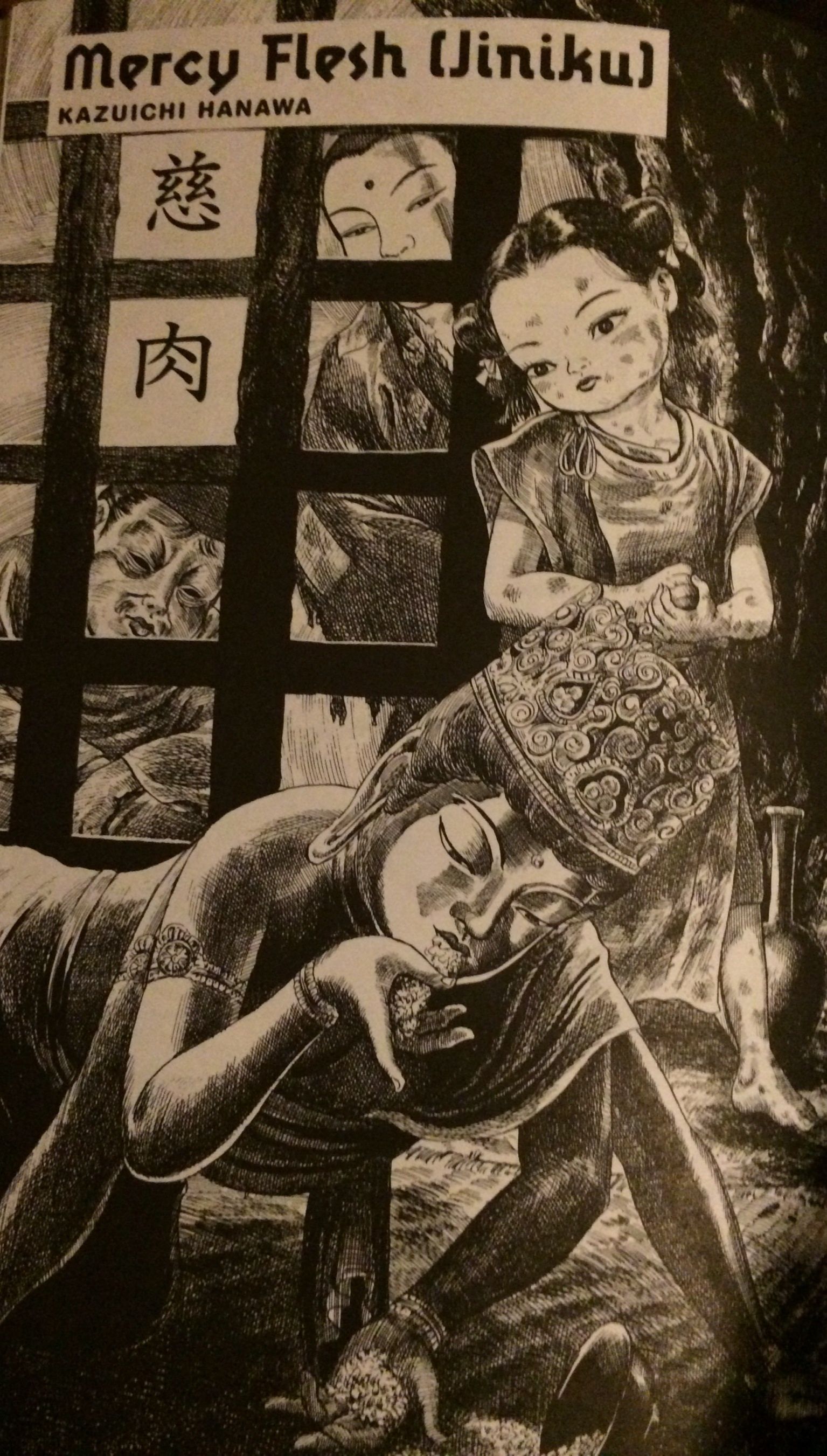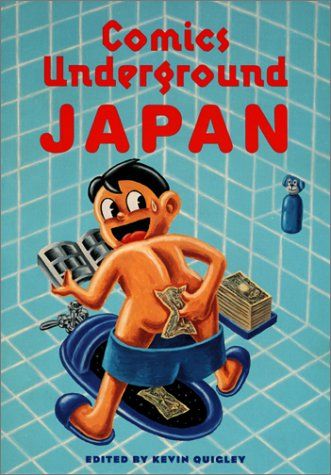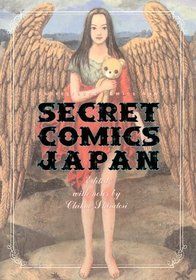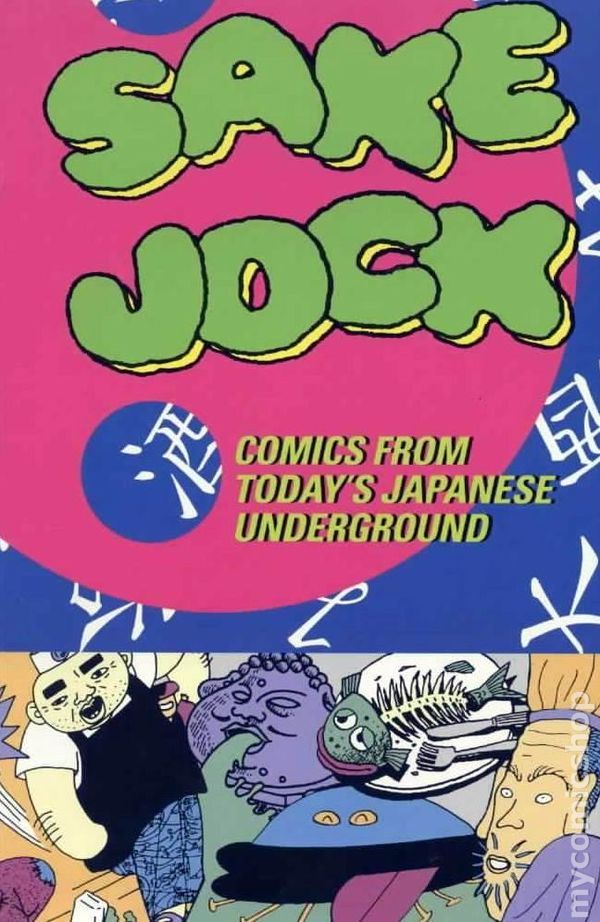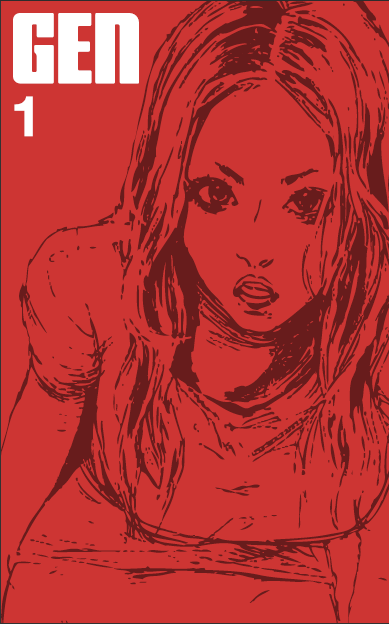I've always been amused by the lack of short story anthologies available in English for manga. There's a good reason for it. The short story anthology graphic novel isn't really a done thing in Japan, primarily because all manga is released serially in themed anthologies, and on any given week you can pick up hundreds of different ones with both chapters and short stories in any genre you want. About the only type we see in English, aside from the infamous Four Shoujo Stories (a very rare and "unauthorized" graphic novel collection), are underground short story anthologies. They appear very rarely, but are a fantastic place to see several artists and stories that usually don't appear anywhere else. Also, plenty of gross-out stuff. Here are the four big ones I can think of off the top of my head, and all are worth checking out for at least a story or two.
AX - An Alternative Manga Anthology (1 volume)
This is the newest and largest (400 pages) of the "underground" manga anthologies available in English. Released in 2010, there was a second volume scheduled, but only the first came out. This is based on the Japanese magazine Ax and its content. You'll find some of the same artists as in the other anthologies (Kazuichi Hanawa being the most exciting example), but there's also a good number of artists whose only work in English appears in this anthology. Allegedly, "underground" manga isn't really a thing in Japan, primarily because most manga is comfortable in its own genre magazines, which includes offbeat content. Even the venerable Shounen Jump has run some weird stuff over the years, if you look hard enough. But by "underground" manga, the art and story range is almost exactly what you'd expect from that description. Some of the artists are quite methodical and detailed, drawing dark and realistic art. Some, like Takeshi Nemoto, draw in a "heta-uma" style, which looks pretty... loose, to be charitable. Like a 10-year-old drawing penises in their notebook, to be more harsh. But the wide variety of artistic styles is fantastic in a book this size. The stories vary just as widely. The Watcher, by Osamu Kanno, is the first story in the collection, and sets the tone nicely. A couple finds a man sleeping on their front step with a knife clutched in his hand. The man is snoring loudly enough to make the neighbors complain, and can't be awoken, even when a passing dog urinates on him. The woman eventually grows bored and begins dancing naked. The story ends. Another story, by Yusaku Hanakuma, is about a woman who gives birth to a litter of puppies instead of a baby, and the ensuing drama when she and her husband work very hard to get their puppy babies accepted into society like real children. Hanakuma's art is spare and "badly drawn," though far from the worst-looking in the book. Yoshiharu Tatsumi appears in this book, with a story about a gorilla called Love Bride, with his always fantastic art. Even better is Kazuichi Hanawa, whose best work appears only in these short story anthologies. His art is similarly fantastic. It's a curious book for sure, and worth picking up simply because it is the most available of all the titles on this page. I prefer the quality of the stories in some of the other anthologies, but you can't beat this one for volume, and it should still be in print and available.
Comics Underground Japan
Of all these collections, this one is my favorite. It has some of the longer and more thought-provoking stories, while still offering the variety of art and storytelling available in the others. Takeshi Nemoto appears again with a fragment of his graphic novel Future Sperm Brazil, so expect to see more badly-drawn penises, but the premise of Future Sperm Brazil is at least interesting (a colony of Japanese people living in Brazil don't know that WWII has ended, and send one of their sons swimming across the Pacific to fight for the cause). Mercy Flesh is one of the best manga short stories I've ever read, about a little girl who has been caged with a bestial, hairy, and savage living Buddha, rendered with Kazuichi Hanawa's detailed and fantastic art. Suehiro Maruo also has a story in this collection, the disturbing Planet of the Jap, about what would happen if Japan won WWII and occupied the US, with similarly excellent art in his wonderful retro style. Hideshi Hino also makes an appearance with a fairly typical Hino Horror story called Laughing Ball. Most delightful, however, is the excerpt from Cat Noodle Soup by Nekojirou, about a family of living cats. The excerpt plays out something like a fanciful fairy tale, though Nekojirou's art is extremely basic and cartoonish. There's also extensive author biographies in the back, a detailed essay about the history of underground manga and the Japanese magazine Garo, and a lot more history and explanation than the others. The downside is that it's the priciest and hardest to come by of all these collections, and used prices usually start at around $50. The price is currently down a bit though, and it looks like used copies start at $30.
Secret Comics Japan
This has some of the same artists and content as Comics Underground Japan, but I feel that this collection is slightly more mainstream. Most notable in this collection is the excerpt from Palepoli, a collection of Usamaru Furuya's first comic work, a series of loosely connected 4-panel gag strips. Allegedly he had a very traditional art background and hadn't read a lot of comics before he started drawing Palepoli, and the results are quite fantastic and varied. Subjects include a Golgo 13 spoof, a boy who can see the fantastic in the mundane, a fight between Jesus and a stag beetle, and the ghost of rejection. Most of the work in here is more traditional, however. There are also some fairly big names in here as well, which goes along with that. Junko Mizuno has a short story (her style is immediately recognizable, and looks a bit like the Powerpuff Girls), along with Shintaro Kago (detailed and surreal art) and Kiriko Nananan, whose inky, spare style is comparable to diary comics. One of the more off-putting stories in the collection was by Makoto Aida, who has a very loose, cartoony style and drew a story about a girl who was raped by American soldiers during WWII, exposed to radiation, then got revenge. That story, while not very pleasant, is still fairly mild compared to what you'll find in some of the other books I mentioned. Also worth mentioning is that a story by Yoshitomo Yoshimoto was based on one of Donald Barthelme's story fragments, which suits the form nicely. This book is also supplemented with information about the artist and story before each story, which helps give context to the work. This is another very valuable book, however. Published in 2000 by Viz, the book gained some notoriety after its release, and is long out of print. Used copies start at $50.
Sake Jock
This one is unlike the others in that it's a 72-page squarebound comic issue published by Fantagraphics in 1995, so it predates a lot of these artists and their semi-popularity among English manga fans. There is some overlap among the artists here and in the other collections. Kiriko Nananan has a story here, as does Nekojirou, and Imiri Sakabashira is also featured, who later had a volume published by Drawn & Quarterly (The Box Man). My favorite here was a story by Naoki and Shunichi Karasawa, which is a very detailed and scientific-sounding explanation about why cat's ears fall off when they eat abalone, complete with photos, head x-rays, and an account of going into a warehouse full of earless cats. It's got several anecdotes, and is just an absurd and wonderful piece. Unfortunately, the Nekojirou short here isn't as good as the segment in Comics Underground Japan (Nekojirou writes about cats), although I'm happy to see any of her work in English. You'll see more of the "heta-uma" scribbly, disorganized style of drawing in this collection, and some more crudeness along the lines of some of the Ax content. But there's a nice cross-selection here, and the good news is that relatively few people know this exists. It runs expensive on book sites, but used comic sites often have it for around $10.
Gen Manga
I feel like I should also give Gen Manga an honorable mention, because I'm a big fan of their work. Most of the above collections are taken from alternative Japanese anthologies Ax and Garo, and several of the artists are relatively well-known, as I've mentioned. Gen is a contemporary anthology of Japanese artists that reads a bit like a doujinshi, or fan-produced comic. Each issue contains a story segment from an ongoing series, and every couple issues a story will end and another will begin. Both the art and story are very unpolished, and the artists are unknown, but it's nice to see something like this underway in English. The price is right, as you can purchase all 16 digital editions for $24, and there are also print editions and story compilations available. Their current project is a manhwa, or Korean, comic anthology.


